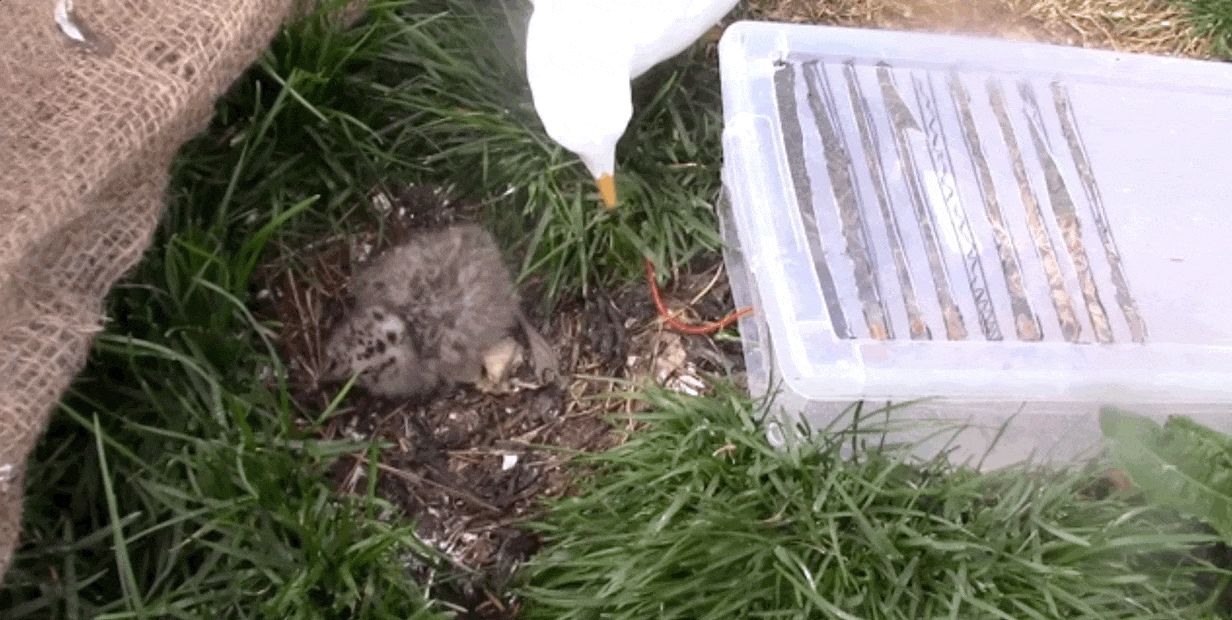Seagulls don't exactly have the best reputation among humans. Along with pigeons, scientists have historically placed these small-brained waterbirds in a relatively low level of cognitive complexity.
Yet some of these species might be smarter than we have assumed. A new study among ring-billed gulls (Larus delawarensis) has found the first evidence these waterbirds can solve the same kinds of puzzles as birds we've crowned as the pinnacle of avian intelligence – parrots and corvids.
Among four different breeding colonies of these wild gulls, located in Newfoundland, Canada, researchers found numerous individuals capable of solving what is known as the string-pull test.
This test is one of the most extensively studied puzzles among animals. If a mammal or a bird can figure out how to pull a string to receive an attached food reward, it's considered a sign of problem-solving by some researchers.
At least 90 avian species have been put through the string-pull test, yet most have been perching birds or parrots. Waterbirds are comparatively overlooked.
In fact, the authors of the current research could only find a handful of past studies that have put waterbird cognition to the test at all, despite the fact that shorebirds, gulls, and auks are remarkably good at adapting to novel environments. Some even use tools for preening or rely on bait to catch fish.
To fill in this gap in our knowledge, researchers decided to put ring-billed gulls through a 'horizontal' pull-string test. In this set-up a string on the ground is connected to a Petri dish holding a piece of sausage, locked inside a transparent plastic box. With only a narrow slit as an entrance to the box, the birds must pull the string to get the sausage out.
But first, the wild gulls had to be habituated to the box's presence. To do this, researchers cordoned off specific gull nests in the wild and placed an empty box next to them. The box was empty, but one piece of sausage was placed outside near the open slit.
Once this had been done four times, researchers placed a sausage on a string inside the box. A sausage was again placed on the outside, right near where the string protruded, to see if the bird would investigate the new material.
Then, three trials of the real pull-string experiment began. At 93 nests, researchers counted a total of 138 parent gulls, returning to their nests to investigate the box.
Of these gulls, 104 individuals attempted to solve the string-pull test in at least one of the trials.
The video below shows one successful attempt.
 (Lamarre and Wilson, Royal Society Open Science, 2021)
(Lamarre and Wilson, Royal Society Open Science, 2021)
"If they investigated the box during a trial, they usually began by consuming the sausage placed at the slit beside the string," the authors explained.
"They then either ignored the box (i.e. did not attempt to reach the food reward) or interacted with it further by putting their bill inside the slit and attempting to grab the Petri dish directly, by pecking gently at the box or by pulling on the string."
In all four colonies, there were wild gulls that could successfully solve the string-pull test. Of all 104 attempts, 25 percent were successful, pulling the sausage out of the box to eat, and 21 percent achieved this on their first go.
Out of all seven gulls that tried the experiment multiple times, three were able to repeat their success. In comparison, about 26 percent of common ravens can solve the string-pull test spontaneously.
In a 2016 study among wild-caught Barbados bullfinches, about 43 percent of birds were able to successfully complete the puzzle, but only two individuals could do it on their first go.
"Since our study limited the number of trials per subject to three, we argue that a success rate of 21 percent on the first attempt and 25 percent overall is strong evidence that ring-billed gulls are proficient at solving this configuration of the string-pull test," the authors write.
"We consider our conclusions robust and representative of the species because they are based on a large sample of 104 gulls (those that attempted to solve the test at least once) distributed among 84 nests and four colonies that encompass the diverse urban and rural foraging opportunities that ring-billed gulls naturally exploit."
What this ultimately means for gull cognition, however, is less clear. The string-pull test has been criticized in the past for not measuring problem-solving.
A study among New Caledonia crows, for instance, found evidence that these birds continued to pull the string only because the food kept creeping closer. If the string was coiled and the food didn't creep closer, they stopped. As such, the researchers argued these birds are not imagining a future plan of action but are pulling the string merely because they can see it working.
Further research is needed to clarify what birds are really trying to achieve when they pull on a string in this task. Using more complex conditions could help tease apart various motivations.
For instance, researchers could introduce two strings to the experiment, which are crossed over. If only one is connected to a sausage, the bird would need to pick the correct string to pull.
These experiments don't exist merely to satiate scientific curiosity. They can tell us important information about how birds adapt, learn, and innovate.
As human activity continues to drastically change coastal habitats, climate change could make it much harder for seabirds to find food.
How the birds handle this adversity could very well dictate their future survival. It's better we know now if they are up to the task.
The study was published in the Royal Society Open Science.
#Nature | https://sciencespies.com/nature/new-study-claims-seagulls-arent-that-stupid-but-we-have-more-questions/
No comments:
Post a Comment